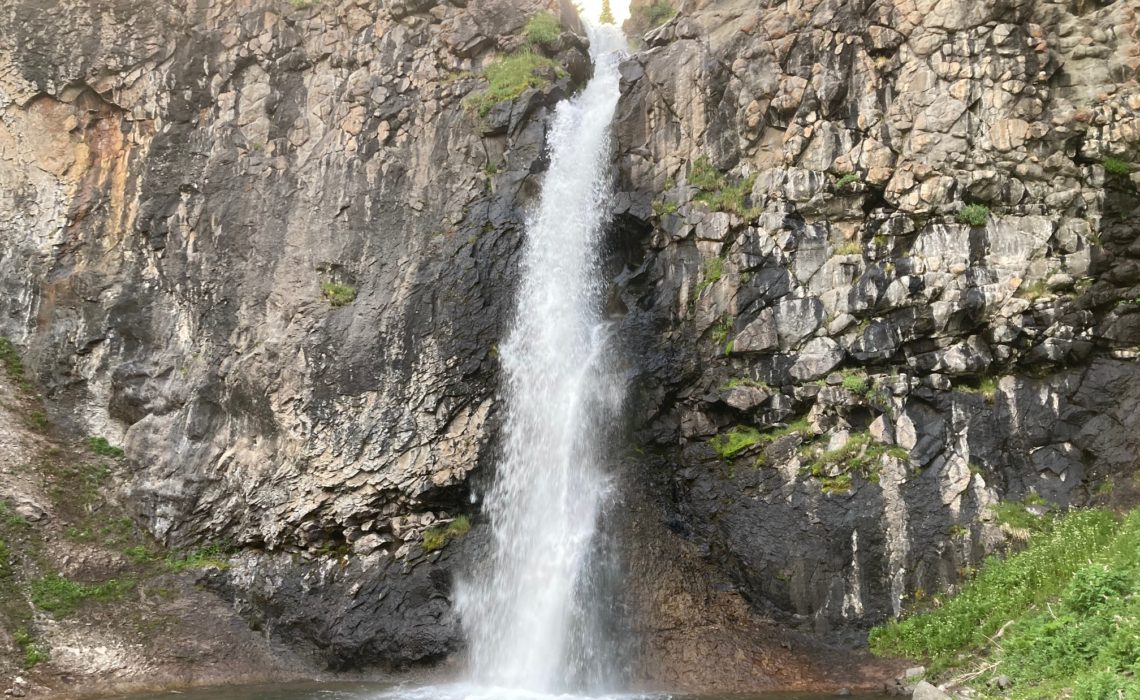
Tramping down the winding trail, the Rocky Mountains surrounded us. Given Colorado is home to sweeping panoramic views, that in itself, wasn’t particularly different. But the trail itself provided a unique experience of actually walking North America’s Continental Divide.
Many visitors to Colorado confuse the Continental Divide with the crest of the mountains. It actually has more to do with water than altitude. The Continental Divide is where one side of the water flows to the Atlantic Ocean. The other side empties into the Pacific Ocean.
Though I’ve hiked many sections of the Continental Divide Trail over the years, I’ve never slept directly on the Continental Divide.
But a recent backpack in the South San Juan Wilderness Area provided the opportunity.
Until a couple of weeks ago, I’d never heard of this particular wilderness area. Not surprising, since Colorado has 40 different wilderness areas.
Weary of encountering hundreds of people in the Indian Peaks Wilderness that borders our hometown of Nederland, we looked for something off the beaten path. During the long holiday weekend, we sought solitude and reprieve from Coronavirus.
The farther the drive from Denver, the fewer people we figured we would encounter. We settled on a remote trail head east of Pagosa Springs. Traveling along a dirt/gravel road for more than an hour, we spied small hamlets of cabins. Truly “off the grid”, each one sported a solar panel or two to run the basics.
Finally, we arrived at the Three Forks Trailhead on Fourth of July. I immediately felt a sense of relief, looking at the 10 other cars in the parking lot.
Yes, we have found that place to escape the crowds of people.
Not only would this be my first backpack in three years, but it would be Logan’s inaugural doggy packpack. At two years old, he was finally ready to carry his own backpack and curl up in our tent with us.
As we walked along the trail, he ran up and down sniffing for the scent of squirrels, foxes and rabbits. With just a slight uphill grade, it wasn’t long before we heard the roar of water from Conejos Falls. For an area in drought, the waterfall was more impressive than I expected.
The water squeezed through a notch just a few feet wide, before cascading down more than 100 feet. I’ve always loved falling asleep to the sound of rushing water. So, finding an ideal camp spot very close to the top of the falls felt like a bonus.
Heading out of camp the next morning towards the Continental Divide Trail proved a bit more challenging. First, the trail petered out in a meadow, forcing us to consult the GPS to find our way.
Then we encountered the “Trail of Death.” Dead trees that is. This area got hit hard by a spruce beetle epidemic during the last 20 years. Dead trees covered the hillsides as well as many part of the trail, forcing us to pick our way through the twisted and snarled limbs for about a mile of trail.
When we made our way above timberline though, the work was worth it. Eye popping views of the peaks surrounded us. Following the small window, we finally arrived at the junction with the Continental Divide Trail.
Then the real work began, and I really felt the pain of carrying a 30-pound pack. As we zigged and zagged our way up the tundra, I huffed and puffed. To compensate for all the effort, I made smaller and smaller steps, trying to lessen the pain and suffering. Feeling like I couldn’t go on much further, we finally attained the ridge and began our long descent to Blue Lake.
After setting up camp on a knoll above the lake, I took a look at the map.
“Oh my gosh, we are actually sleeping on the Continental Divide!”
My wish for quiet and serenity was granted, as we spent a peaceful night at the west side of the lake, with no other campers in sight.
If you’re looking for an adventure to call your own, consider looking outside the Front Range and the I-70 corridor.
You just might discover a special place full of beauty without the crowds, something we could all use right now.

